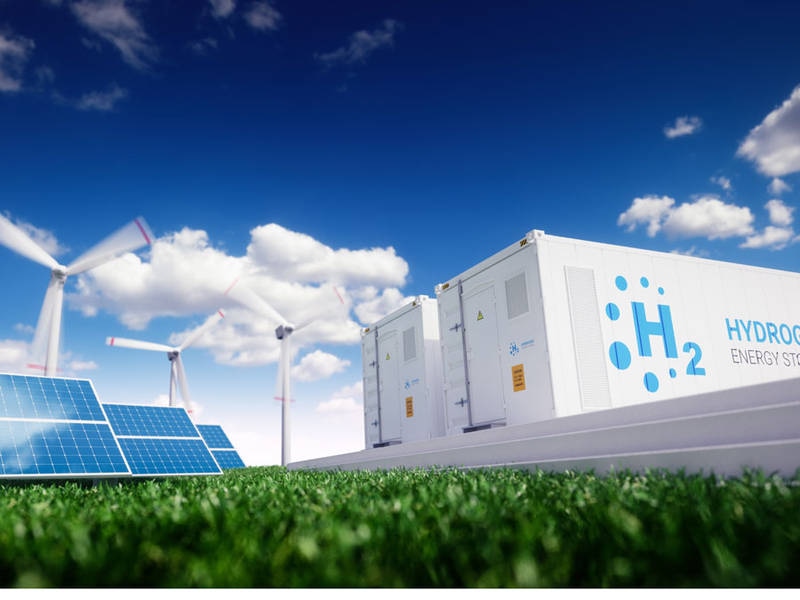Feb 27 2019
Today, hydrogen production based on wind power could already be commercially viable. Until recently, there has been a general assumption that this ecologically friendly power-to-gas technology could not be applied profitably.
 Facilities that combine electricity and hydrogen production are particularly profitable. (Image: iStock.com/Petmal)
Facilities that combine electricity and hydrogen production are particularly profitable. (Image: iStock.com/Petmal)
Based on the market situations in Texas and Germany, economists at the Technical University of Munich (TUM), the University of Mannheim, and Stanford University have now explained how it could be possible for flexible production facilities to make this technology a vital component in the transition of the energy system.
Hydrogen is a highly versatile gas that can be used in fertilizer production and even fuel cells for cars or as a coolant for power stations. Most hydrogen for industrial applications is presently being produced using fossil fuels, above all with coal and natural gas. However, in an ecologically friendly energy system, there lies the possibility for hydrogen to play a different role: as a vital storage medium and also as a means of balancing power distribution networks—surplus wind and solar energy can be used to generate hydrogen via water electrolysis. This process is called power-to-gas. It is possible for the hydrogen to recover the energy later, for instance, by producing heat and power in fuel cells, mixing hydrogen into the natural gas pipeline network or getting transformed into synthesis gas.
“Should I Sell the Energy or Convert it?”
However, power-to-gas technology has always been considered as non-competitive. Gunther Glenk of the Chair of Management Accounting at TUM and Prof. Stefan Reichelstein, a researcher at the University of Mannheim and Stanford University, have presently completed a study proving the possibility of zero-emission and profitable hydrogen production. Their research has been featured in the well-known journal Nature Energy and demonstrates that one factor is vital in the existing market environments in Texas and Germany.
The concept will need facilities that can be used both to produce hydrogen and also to feed power into the grid. These combined systems, which are yet to be used more commonly, must be able to react optimally to the extensive fluctuations in the prices in power markets and in the output of wind power.
The operator can decide at any time: should I sell the energy or convert it.”
Stefan Reichelstein, Professor and Researcher, University of Mannheim and Stanford University.
Production in Specific Industries Would Already be Profitable
In Texas and Germany, such facilities could already generate hydrogen at costs competitive with facilities consuming fossil fuels up to specific production output levels. However, in Germany, the price approved by the government would have to be paid for the production of electric power instead of being paid for feeding it into the grid.
For medium and small-scale production, these facilities would already be profitable now.
Stefan Reichelstein, Professor and Researcher, University of Mannheim and Stanford University.
Production on that scale is considered to be ideal for the electronics and metal industries, for instance, or for fuelling a fleet of forklift trucks on a factory site. The economists forecast that by 2030, the process will also attain competitive levels in large-scale production, for instance, for ammonia production and refineries, believing that electrolyte and wind power costs maintain the downward path seen in the current years.
The use in fuel cells for trucks and ships is also conceivable.
Gunther Glenk, Chair of Management Accounting, TUM.
Energy Sources for Intelligent Infrastructure
The model developed by the economists offers a planning blueprint for industry and energy policy. This model is capable of considering several other factors that could include charges for carbon emissions, and it can also estimate optimal sizing of the two sub-systems. The model is also applicable to other regions and countries.
Power-to-gas offers new business models for companies in various industries. Power utilities can become hydrogen suppliers for industry. Manufacturers, meanwhile, can get involved in the decentralized power generation business with their own combined facilities. In that way, we can develop a climate-friendly and intelligent infrastructure that optimally links power generation, production and transport.
Gunther Glenk, Chair of Management Accounting, TUM.